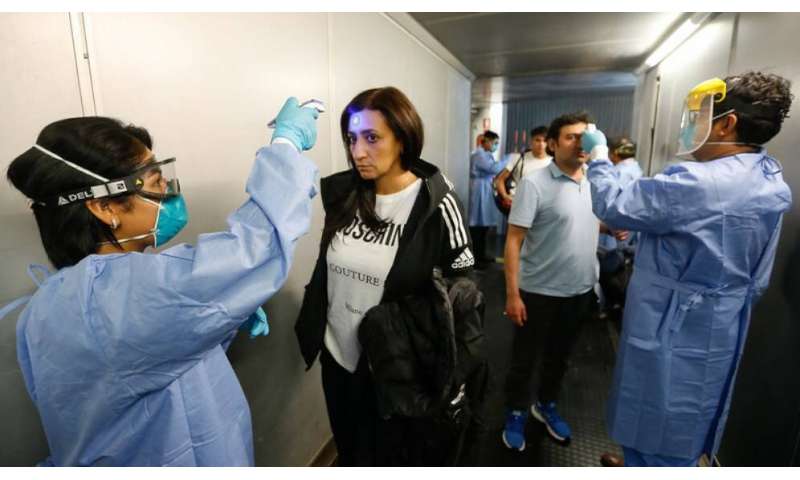
Researchers in Brazil have created a system capable of measuring body temperature from a distance and in crowded environments, such as hospitals, supermarkets and factories.
The system aims to detect people with fever—one of the most frequent symptoms of COVID-19—and prevent the virus SARS-CoV-2 from spreading.
The technology, called Fevver, is based on algorithms and artificial intelligence connected to a camera. It captures images of faces and detects infrared energy radiation by measuring the temperature of the corners of the eyes, where the lacrimal channels are located.
The system is already being used in the Albert Einstein hospital, a private medical facility in São Paulo, which has the most recorded COVID-19 cases in Brazil. Set up at the hospital reception, it can capture and analyze the face of every person who enters the facility.
“The tear ducts are ideal places to assess body temperature by thermography as they are structures without epidermal coverage, with relatively stable humidity and vascularity close to the brain, where the body’s thermal control is performed,” says Paulo Gurgel Pinheiro, chief executive of Hoobox Robotics, which developed the new computational vision technology with Radsquare.
When the system detects fever it triggers a camera, which takes a photo of the person and sends a notification to nursing staff.
“It has shown to be an effective way to screen people arriving at the hospital and direct those who have fever and eventually COVID-19 infection to another space designed to receive them,” Pinheiro adds.
He declines to say how much has cost to develop the new technology, instead emphasizing the importance of increasing the safety of other patients and the hospital staff.
“Any technological solution that contributes to mitigating the COVID-19 pandemic effects is welcome at this time,” Marcus Lima, a researcher at the School of Mechanical Engineering at the University of Campinas, one of Brazil’s biggest centers for research in this field, tells SciDev.Net.
He says computational vision in this case can extract more information than just a person’s body temperature.
“The system can use the image to estimate the age, the gender, and even determine if the person is registered in the hospital database, generating data of high value to doctors and researchers to better understand the pandemic dynamics,” says Lima, co-founder of Acta Visio, a company created in 2017 to develop solutions based on computer vision.
Lima and his team are working on the prototype of an image-processing system called Asepguard, which monitors hand hygiene among healthcare professionals. It aims is to reduce every kind of infection, including COVID-19, and provide quantitative data that can help hospital managers evaluate sanitation procedures.
The first tests involving Asepguard were conducted last year at the Cajuru University Hospital in Curitiba, Paraná, in partnership with hospital management company 2iM. Researchers are now considering how to move forward with technology.
While there may be benefits from these new technologies, there are also ethical considerations.
For Paulo Gardel Kurka, a mechanical engineer also at the School of Mechanical Engineering at the University of Campinas, one important consideration is the security of the information collected.
“Who will own the patient’s face image? What else will the information about the health, or the lack of health, of an individual be used for? How can this information be protected from criminal actions? These issues are among the biggest challenges involving the rapidly advancing of the digital revolution in the world,” Kurka says.
Source: Read Full Article
